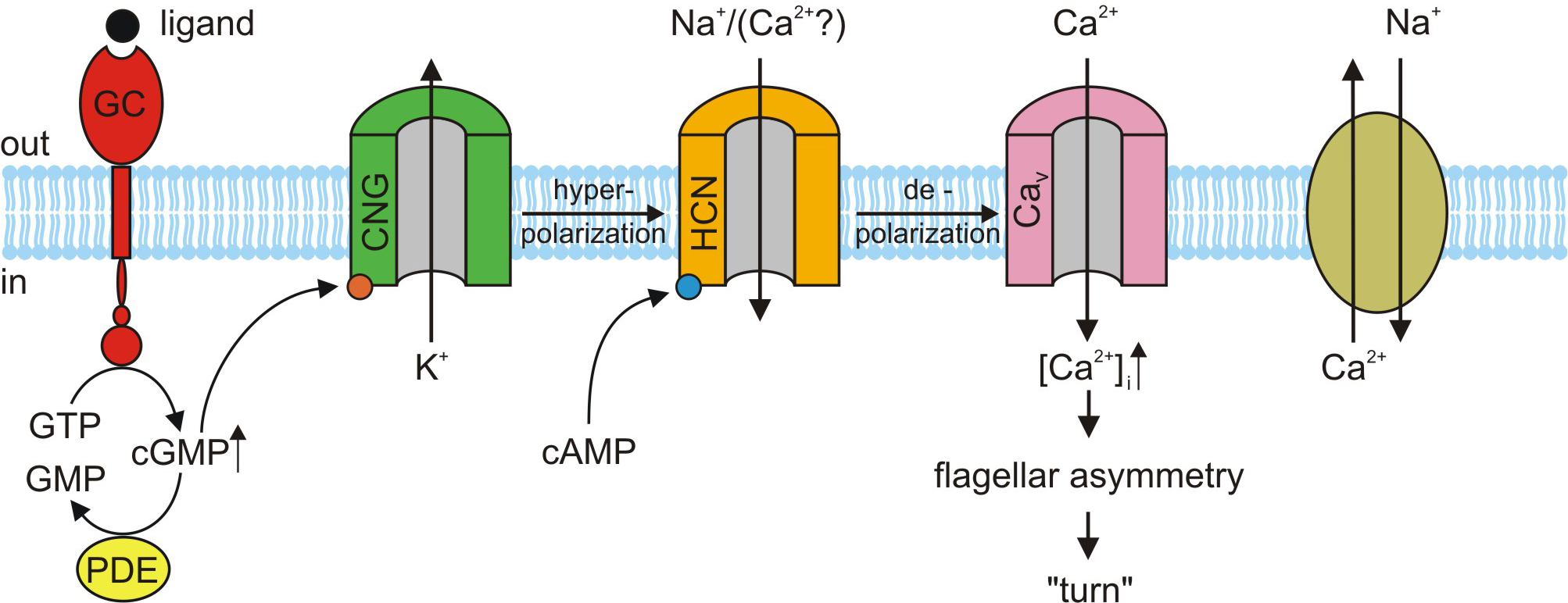|
Trichloroanisole
2,4,6-Trichloroanisole (TCA) is a chemical compound that is a chlorine, chlorinated derivative of anisole. TCA is a fungal metabolite of 2,4,6-Trichlorophenol, 2,4,6-trichlorophenol, which is used as a fungicide. It can be found in minute traces on packaging materials stored in the presence of fiberboard treated with trichlorophenol. TCA has an unpleasant earthy, musty and moldy smell and is the chemical primarily responsible for cork taint in wines. TCA has also been implicated as a major component of the "Rio defect" in coffees from Central and South America, which refers to a taste described as medicinal, phenolic, or iodine-like. TCA is usually produced when naturally occurring airborne fungus, fungi and bacteria (usually ''Aspergillus'' sp., ''Penicillium'' sp., ''Actinomycetes'', ''Botrytis cinerea'', ''Rhizobium'' sp., or ''Streptomyces'') are presented with halogenation, chlorinated phenols, phenolic compounds, which they then convert into chlorinated anisole derivative (c ... [...More Info...] [...Related Items...] OR: [Wikipedia] [Google] [Baidu] |
Cork Taint
Cork taint is a broad term referring to a wine fault characterized by a set of undesirable smells or tastes found in a bottle of wine, especially spoilage that can only be detected after bottling, aging and opening. Though modern studies have shown that other factors can also be responsible for taint – including wooden barrels, storage conditions and the transport of corks and wine – the cork stopper is normally considered to be responsible, and a wine found to be tainted on opening is said to be corked or "corky". Cork taint can affect wines irrespective of price and quality level. The chief cause of cork taint is the presence of the chemical compounds 2,4,6-trichloroanisole (TCA) or 2,4,6-tribromoanisole (TBA) in the wine, which in many cases will have been transferred from the cork, but which also can have been transferred through the cork rather than from it. TCA is a compound which does not occur naturally. It is created when some fungi are treated with chlor ... [...More Info...] [...Related Items...] OR: [Wikipedia] [Google] [Baidu] |
Chlorine
Chlorine is a chemical element with the Symbol (chemistry), symbol Cl and atomic number 17. The second-lightest of the halogens, it appears between fluorine and bromine in the periodic table and its properties are mostly intermediate between them. Chlorine is a yellow-green gas at room temperature. It is an extremely reactive element and a strong oxidising agent: among the elements, it has the highest electron affinity and the third-highest electronegativity on the revised Electronegativity#Pauling electronegativity, Pauling scale, behind only oxygen and fluorine. Chlorine played an important role in the experiments conducted by medieval Alchemy, alchemists, which commonly involved the heating of chloride Salt (chemistry), salts like ammonium chloride (sal ammoniac) and sodium chloride (common salt), producing various chemical substances containing chlorine such as hydrogen chloride, mercury(II) chloride (corrosive sublimate), and hydrochloric acid (in the form of ). However ... [...More Info...] [...Related Items...] OR: [Wikipedia] [Google] [Baidu] |
Phenols
In organic chemistry, phenols, sometimes called phenolics, are a class of chemical compounds consisting of one or more hydroxyl groups (— O H) bonded directly to an aromatic hydrocarbon group. The simplest is phenol, . Phenolic compounds are classified as simple phenols or polyphenols based on the number of phenol units in the molecule. Phenols are both synthesized industrially and produced by plants and microorganisms. Properties Acidity Phenols are more acidic than typical alcohols. The acidity of the hydroxyl group in phenols is commonly intermediate between that of aliphatic alcohols and carboxylic acids (their pKa is usually between 10 and 12). Deprotonation of a phenol forms a corresponding negative phenolate ion or phenoxide ion, and the corresponding salts are called phenolates or phenoxides (aryloxides according to the IUPAC Gold Book). Condensation with aldehydes and ketones Phenols are susceptible to Electrophilic aromatic substitutions. Condensation with formald ... [...More Info...] [...Related Items...] OR: [Wikipedia] [Google] [Baidu] |
Cyclic Nucleotide–gated Ion Channel
Cyclic nucleotide–gated ion channels or CNG channels are ion channels that function in response to the binding of cyclic nucleotides. CNG channels are nonselective cation channels that are found in the membranes of various tissue and cell types, and are significant in sensory transduction as well as cellular development. Their function can be the result of a combination of the binding of cyclic nucleotides (cGMP and cAMP) and either a depolarization or a hyperpolarization event. Initially discovered in the cells that make up the retina of the eye, CNG channels have been found in many different cell types across both the animal and the plant kingdoms. CNG channels have a very complex structure with various subunits and domains that play a critical role in their function. CNG channels are significant in the function of various sensory pathways including vision and olfaction, as well as in other key cellular functions such as hormone release and chemotaxis. CNG channels have also ... [...More Info...] [...Related Items...] OR: [Wikipedia] [Google] [Baidu] |
Lignin
Lignin is a class of complex organic polymers that form key structural materials in the support tissues of most plants. Lignins are particularly important in the formation of cell walls, especially in wood and bark, because they lend rigidity and do not rot easily. Chemically, lignins are polymers made by cross-linking phenolic precursors. History Lignin was first mentioned in 1813 by the Swiss botanist A. P. de Candolle, who described it as a fibrous, tasteless material, insoluble in water and alcohol but soluble in weak alkaline solutions, and which can be precipitated from solution using acid. He named the substance “lignine”, which is derived from the Latin word '' lignum'', meaning wood. It is one of the most abundant organic polymers on Earth, exceeded only by cellulose. Lignin constitutes 30% of non-fossil organic carbon on Earth, and 20 to 35% of the dry mass of wood. Lignin is present in red algae, which suggest that the common ancestor of plants and red algae ... [...More Info...] [...Related Items...] OR: [Wikipedia] [Google] [Baidu] |

